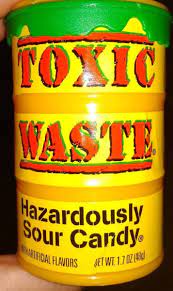Chemical Pollution Is Destroying Masculinity

Endocrine Disrupting Chemicals in Pesticides and Plastics
Over the last ten years, clinical and ecological research continues to suggest that many synthetic and natural chemicals can disrupt the hormone balance of the endocrine system, producing various adverse effects in all sorts of creatures, including birds, fish, and wildlife, and even human beings.
Scientists and researchers have labeled these chemicals endocrine disruptors when discussing the hormonal implications of these chemicals. In today's 21st century world, these products are everywhere in our lives. Some of the most common places where these chemicals exist are pesticides, cosmetics, toys, foods, flame retardants, detergents, metal food cans, and some plastic bottles.
Today, there is a limited body of scientific data available regarding these chemicals, but there is a legitimate concern over how these chemicals may impact human health. In the environment, there are areas that are polluted with endocrine disrupting chemicals to an extent that ecological populations are experiencing deleterious effects directly as a result. These negative health impacts have also been proven in a laboratory atmosphere.
Although it is clear that Endocrine Disrupting Chemicals are a health risk under certain circumstances and concentrations, it can be hard to study the health impact of these chemicals because people are generally exposed to a number of these chemicals at varying concentrations at the same time.
Government and non-profit organizations are dedicated to clarifying the health risks and implications associated with Endocrine Disruptors, two of which are the National Toxicology Program and the National Institute of Environmental Health Science.
These groups support and fund scientific studies to foster a more complete understanding of how these chemicals impact the hormone balance between protecting both human beings and wildlife from the negative impact of Endocrine Disrupting Chemicals. In the near and distant future, these programs hope to minimize the domestic and global environmental and health impact of these chemicals and discover ways to mitigate the negative effects.
What is an Endocrine Disrupting Chemical?
Endocrine Disrupting Chemicals are synthetic or naturally occurring chemicals that have the capacity to interfere with the secretion or functional capacity  of hormones produced by the endocrine system. These chemicals can significantly alter hormone balance in humans and animals, leading directly to negative health consequences. Some of these Endocrine Disruptors have been strongly correlated with immune, neural, reproductive, and developmental issues in captive and wild animal populations.
of hormones produced by the endocrine system. These chemicals can significantly alter hormone balance in humans and animals, leading directly to negative health consequences. Some of these Endocrine Disruptors have been strongly correlated with immune, neural, reproductive, and developmental issues in captive and wild animal populations.
Many researchers also believe that these chemicals and compounds can negatively impact human health at existing concentrations. There is some correlation between reduced fertility and Endocrine Disrupting Chemicals. These chemicals also appear to increase the risks of certain health conditions, including several cancers.
In addition to Endocrine Disruptors and Endocrine Disrupting Chemicals, these chemicals are also referred to by a number of other names, including Endocrine Active Compounds, Environmental Hormones, and Endocrine Modulators.
There are forms of chemical pollution that affect various types of hormone balance, but the group of chemicals that have received the largest body of scientific study are those that increase the physiological influence of Estrogen. A number of other chemical disruptors have been identified, however, including those that encourage the production of thyroid hormones, androgens, and progesterone and those that inhibit the production of Estrogens and Androgens.
What is the Importance of the Endocrine System?
Along with the Neurological System, the Endocrine system is the primary way that the body communicates changes from disparate areas of the body. The Endocrine System also plays a central role in coordinating and controlling numerous physiological functions. The Endocrine System produces these changes directly through the secretion of hormones from Endocrine Tissues situated throughout the body, including the pancreas, thyroid, pituitary, testes, and ovaries. These hormones then enter the bloodstream, flow to target organs, and affect change.
Hormones can conduct a complex orchestra of necessary functions that keep us happy and healthy. One example of how hormones function is the complex way that the reproductive system, nervous system, fat, liver, gut, and kidneys work together in order to control and maintain various metabolic functions, including:
Reproduction
Development and Growth
Energy Level of the Body
Hormone Homeostasis
Response to Injury, Stress, and Outside Influences
Endocrine Disrupting Chemicals interfere with the normally-closed set of signals flowing throughout the body to keep us healthy, leading directly to hormone imbalance which causes a variety of negative consequences.
How do Endocrine Disrupting Chemicals Work?
Animal research has provided a lot of insight into the impact of Endocrine Disrupting Chemicals. There are a number of different mechanisms through which EDCs have the ability to alter the normal function of the human body.
Endocrine Disruptors have the ability to:
Substitute partially or completely for hormones produced naturally by the human body, such as Thyroids Hormones, Androgens and Estrogens. These chemicals imbalance the system by overstimulating the body with the effects of a particular hormone.
Block a hormone's normal and healthy function by blocking cell receptors and preventing hormones from making their connections. In these cases, the target organ does not receive the full physiological signal, and the body displays symptoms and signs of deficiency. Chemicals that produce these effects are categorized under terms such as Anti-Androgens and Anti-Estrogens.
Other Endocrine Disruptors can block or alter the way that hormones and hormone receptors are controlled or created. One example is that there are certain EDCs that can prevent the proper metabolism of hormones by the liver.
What are Some Particular Examples of Endocrine Disrupting Chemicals?
There are a large number of chemicals that have the capacity to alter normal Endocrine Functions in a variety of ways. A few well-known Endocrine Disrupting chemicals are PCBs, Dioxin, the medication Diethylstibesterol (also known as DES), and pesticides like DDT.
Other chemicals, commonly plasticizers and pesticides, have been shown to have Endocrine Disrupting effects in animal studies, such as Bisphenol A (also known as BPA). Bisphenol A is a synthetic chemical that is in many plastic products such as bottles, which leach from certain products when exposed to heat. BPA has many industrial applications, including the creation of beverage and food containers and an ingredient of resins used in dental sealants.
Another large group of Endocrine Disrupting Chemicals is known as phthalates. These synthetic chemicals' industrial applications improve the flexibility or soften plastics made from polyvinyl chloride. One common phthalate is DEHP. This chemical is used in the production of a large number of polyvinyl products such as food packages, clothes, car products, building materials, children's products, and medical tools. Scientists with the National Toxicology  Program have found that there may be a link between DEHP and developmental issues in young children, especially male infants who are seriously ill.
Program have found that there may be a link between DEHP and developmental issues in young children, especially male infants who are seriously ill.
Some of the most common forms of naturally occurring Endocrine Disrupting Chemicals are known as Phytoestrogens. These chemicals are naturally produced in some plants and have the ability to partially mimic the effects of Estrogen under some circumstances. Some of these chemicals can be found in foods and other products produced from soy, such as daidzein and genistein.
Representatives of the National Toxicology Program recognized the importance of evaluating the risks of Endocrine Disrupting Chemicals upon human reproduction and created The Center for the Evaluation of Risks to Human Reproduction. This group analyzes various products for signs that they may impact normal fetal and childhood development. The Center has determined that seven Phthalate compounds have Endocrine-Disrupting Effects and one particular Phytoestrogen known as Genistein. Genistein is an ingredient in infant formulas derived from soy.
How do People become Exposed to Endocrine Disrupting Chemicals?
There are a number of ways that individuals of all ages can become exposed to EDCs. It can enter through their dietary choices, the medicines they are prescribed, and even the make-up they put on their face. Exposure can occur directly through the skin, digestive system, and breathing.
Many chemicals which have these Endocrine Disrupting qualities take a long time to degrade or otherwise dissipate, such as the pesticide DDT. For this reason, many EDC Chemicals can be a health risk long after being used.
What is the Current State of Endocrine Disrupting Chemical Research?
The National Institute of Environmental Health Science has spent over thirty years researching the impact of medical Diethylstilbestrol on human patients. This chemical was used from the 1940s to the 1970s because medical professionals mistakenly believed that the chemical had the ability to reduce the risk of miscarriage for patients at serious risk.
In 1972, it was discovered that daughters born to mothers that were treated with DES had a significantly increased risk of experiencing a very uncommon form of vaginal cancer. In addition to this, DES produced many other changes in children of both sexes born to mothers that took the drug. The National Institute of Environmental Health Science performed extensive animal studies which proved the link between exposure to DES and the development of birth defects and increased cancer risk.
Leading directly from this initial, stunning series of discoveries, scientists with the NIEHS have continued to study other chemicals which interact adversely with estrogen receptors. Scientists continue to broaden the body of knowledge regarding Endocrine Disrupting Chemicals in a number of different ways, including:
Creating new tools and models to reveal new information about how Endocrine Disruptors function
Uncovering new techniques to discover which chemicals produce Endocrine Disrupting Effects
Studying the impact of EDC exposure throughout the lifespan and how it impacts health
Studying the effects of EDCs in existing human patient populations
Creating new tests and biological markers in order to measure both toxicity levels and exposure to these chemicals
Animal studies were created to assess the effects of EDC exposure
Developing ways to treat patients exposed to EDCs or learn ways to prevent exposure
When are Endocrine Disrupting Chemicals Most Dangerous?
Scientific studies show that EDC exposure produces the highest level of risk before a child is born or in the period after birth in which the organs of the child's body are still developing. In animal studies, there are a number of different issues related to early EDC exposure, including increased cancer risk and reduced fertility, which may not become an issue until a much later point in the lifespan.
In one case, researchers found that animal subjects exposed to synthetic BPA or natural, human Estradiol during prenatal development and Estradiol during adulthood were much more likely to develop a particular prostate cancer precursor. This study provides evidence that both natural and synthetic estrogen exposure can impact the way the prostate behaves at the genetic level, which increases the risk of prostate disorders and cancer.
estrogen exposure can impact the way the prostate behaves at the genetic level, which increases the risk of prostate disorders and cancer.
Low-Level Endocrine Disrupting Chemical Disruptor Exposure
Researchers have found that there is credible evidence that EDCs can impact the physiological function of animals even at very low doses. These doses are significantly below what has traditionally been believed to impact health and physiology.
Even though there has been a limited amount of study in regard to the direct impact of EDCs upon human health and function, the body of animal evidence is quite large, and Endocrine Disrupting Chemicals have the ability to cause the following issues in animal populations:
Abnormal development of male reproductive organs
Drop in male fertility
Increased female-to-male birth ratio
Increased incidence of sexual issues in female animals, including fertility complications and premature puberty
Increased incidence of breast, prostate, and ovarian cancer
BPA may also negatively impact diabetes and obesity.
Can Endocrine Disruptors in Pesticides and Plastics Affect Future Generations?
Evidence suggests that Endocrine Disrupting Chemicals not only negatively impact individual exposure, but EDC exposure may also have a hereditary risk. There is some research that provides evidence that a patient exposed to Endocrine Disruptors may pass on their genetic abnormalities to future generations. The increased risk of cancer in laboratory animals is passed on to three generations after initial exposure.
Another study found that male laboratory rats exposed to two particular EDCs were found to carry on abnormalities in almost every male in proceeding generations. The researchers hypothesize that these EDCs have the ability to alter gene expression without directly causing genetic mutation.
EDC research is a vastly expanding field, and as our knowledge of the effects of these chemicals continues to grow, it will help us to prevent or mitigate the effects of these chemicals on both human and animal populations.
- What Is Andropause And How Can I Prepare For It? [Last Updated On: November 11th, 2024] [Originally Added On: February 20th, 2021]
- Theories On Aging [Last Updated On: November 10th, 2024] [Originally Added On: February 21st, 2021]
- Sleep And Hgh Go Hand In Hand [Last Updated On: November 9th, 2024] [Originally Added On: February 22nd, 2021]
- L-carnitine Has The Ability To Preserve Mental Sharpness In The Elderly [Last Updated On: November 8th, 2024] [Originally Added On: February 23rd, 2021]
- Knowing Two Languages Can Postpone Dementia [Last Updated On: November 7th, 2024] [Originally Added On: February 24th, 2021]
- What Are The Functions Of Human Growth Hormone? [Last Updated On: November 5th, 2024] [Originally Added On: February 25th, 2021]
- Hgh Sleep: Keep Young And Healthy With Deep Sleep [Last Updated On: November 4th, 2024] [Originally Added On: February 26th, 2021]
- Why Does Human Growth Hormone Production Drop As We Age? [Last Updated On: November 3rd, 2024] [Originally Added On: February 27th, 2021]
- Growing Life Spans And Life Expectancy [Last Updated On: November 2nd, 2024] [Originally Added On: February 28th, 2021]
- Flax Seed Oil: Longevity And Anti-aging Medicine [Last Updated On: November 1st, 2024] [Originally Added On: March 1st, 2021]
- Exercise To Increase Your Hgh Production! [Last Updated On: February 19th, 2025] [Originally Added On: March 2nd, 2021]
- Eighteen Suggestions For A Longer And Happier Life [Last Updated On: October 31st, 2024] [Originally Added On: March 3rd, 2021]
- Bio-identical Hgh Hormone Replacement Therapy [Last Updated On: October 30th, 2024] [Originally Added On: March 5th, 2021]
- The Longevity Film: A review [Last Updated On: July 8th, 2024] [Originally Added On: October 25th, 2022]
- Blue Zone Cultures and Their Connection to Longevity [Last Updated On: February 20th, 2025] [Originally Added On: October 27th, 2022]
- The Prevalence and Impact of Endocrine Disrupting Chemicals [Last Updated On: February 11th, 2025] [Originally Added On: February 11th, 2025]
- Understanding Exercise's Role in Slowing Down Aging [Last Updated On: February 10th, 2025] [Originally Added On: February 12th, 2025]
- Understanding the Concept of Blue Zones [Last Updated On: February 16th, 2025] [Originally Added On: February 16th, 2025]
Word Count: 2045







